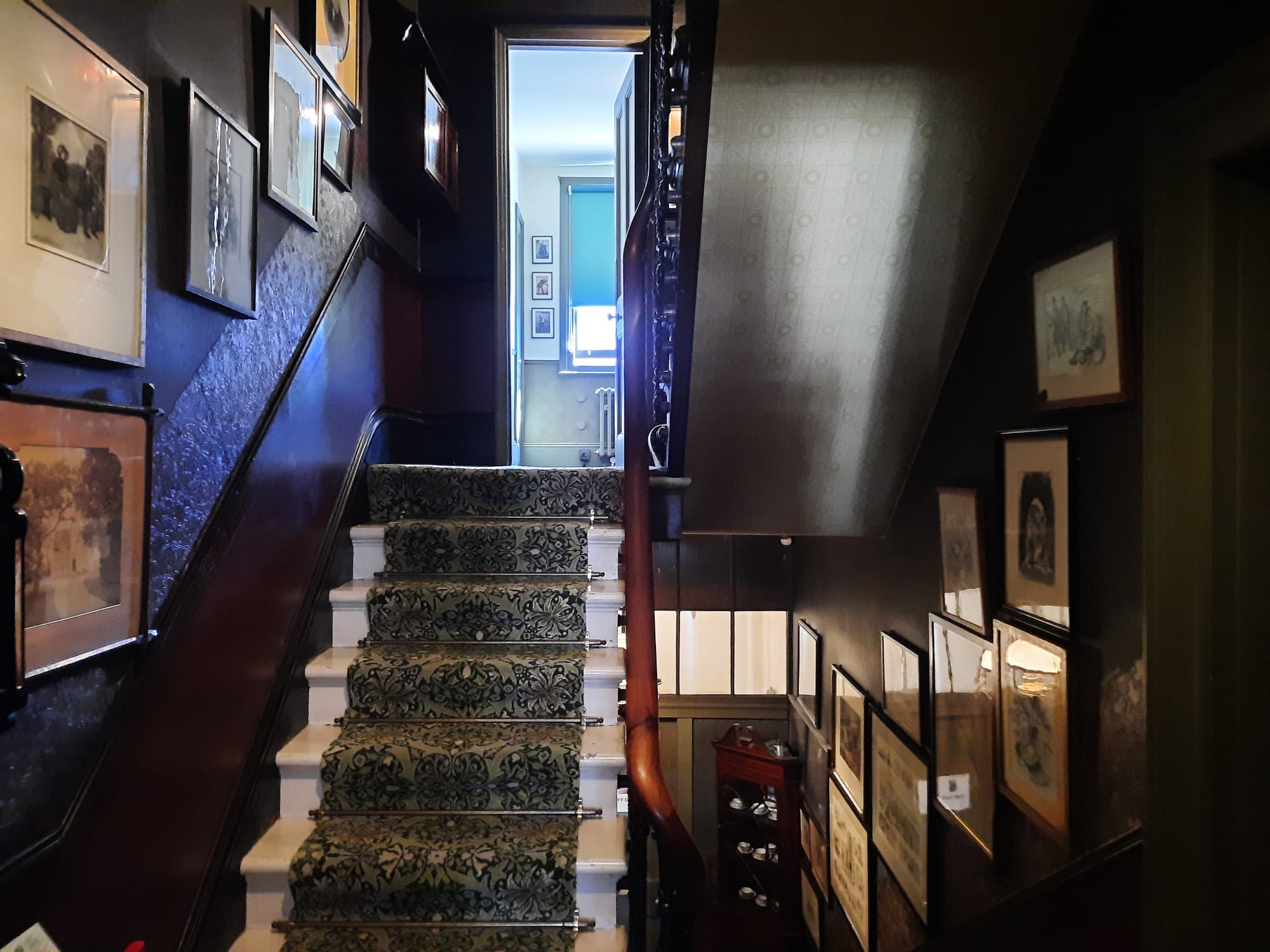Sambourne House, London
Sambourne House is like a delightful time capsule, transporting visitors back to Victorian London and a family aspiring to be part of the Holland Park Circle of artists.
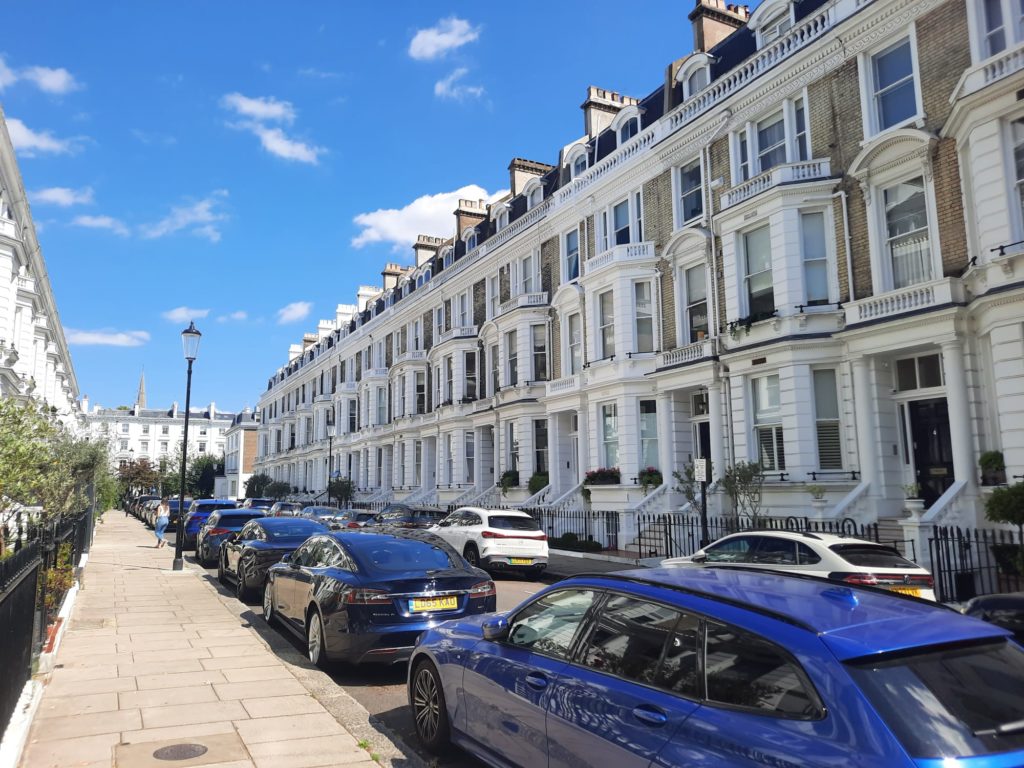
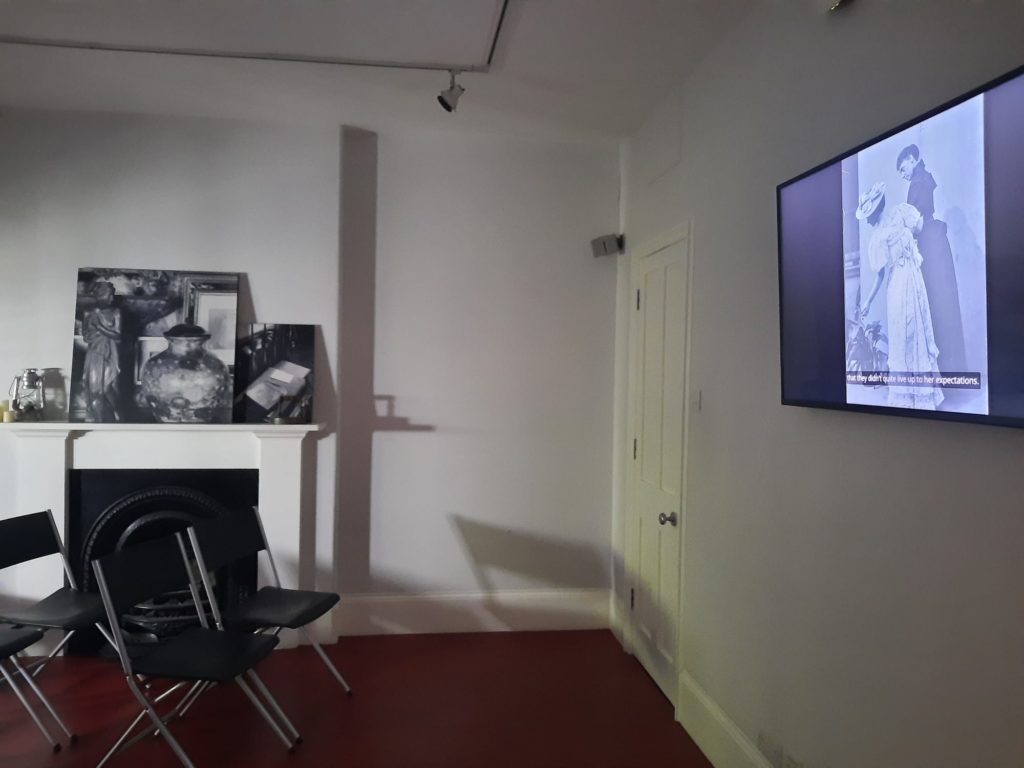
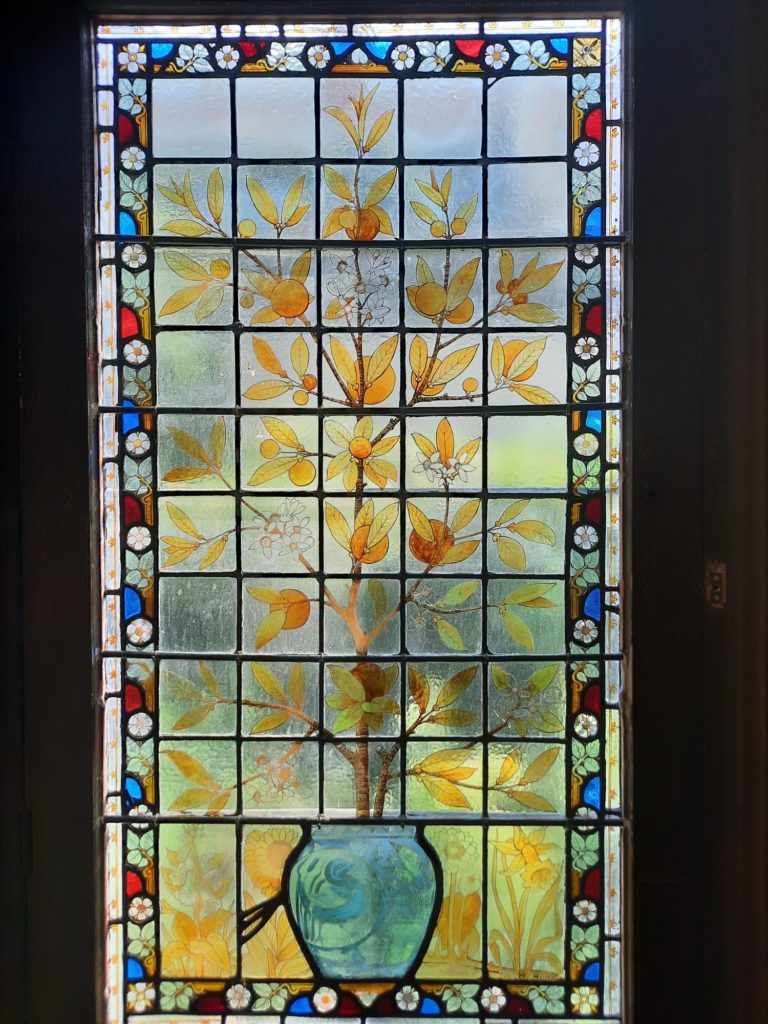
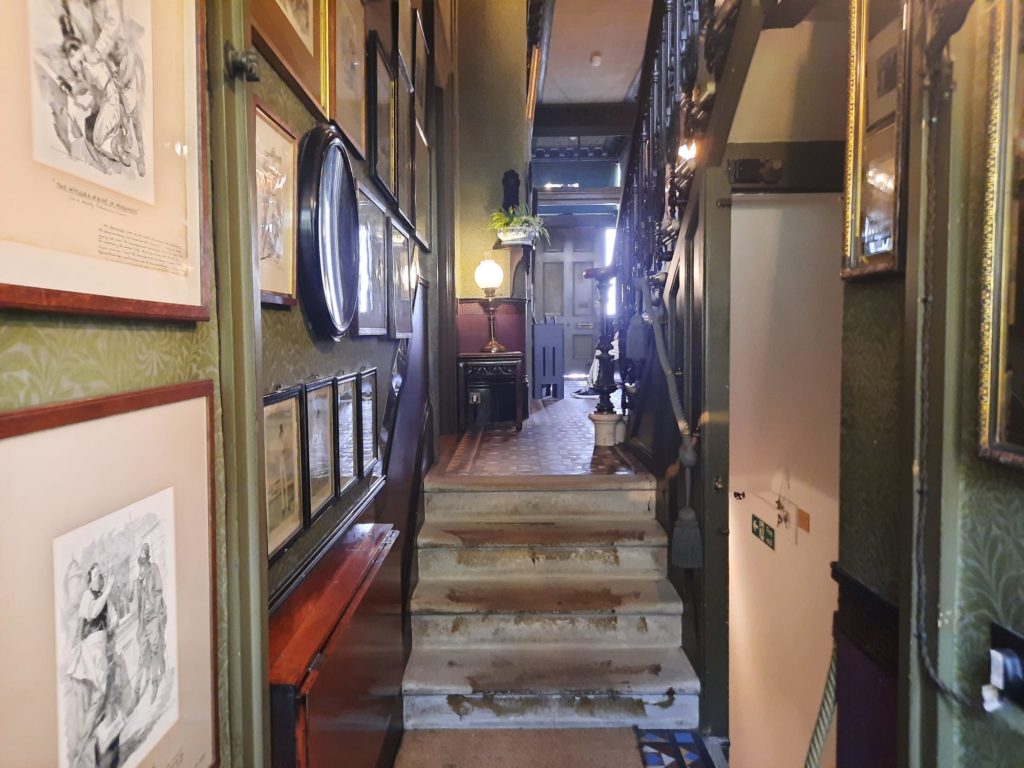
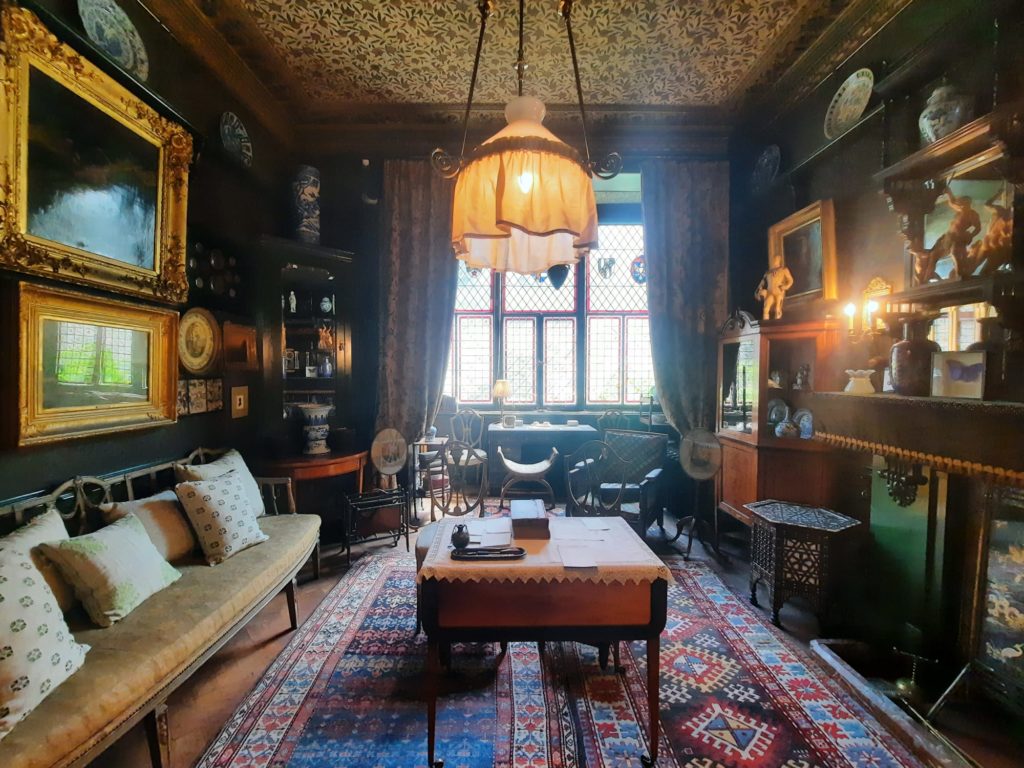
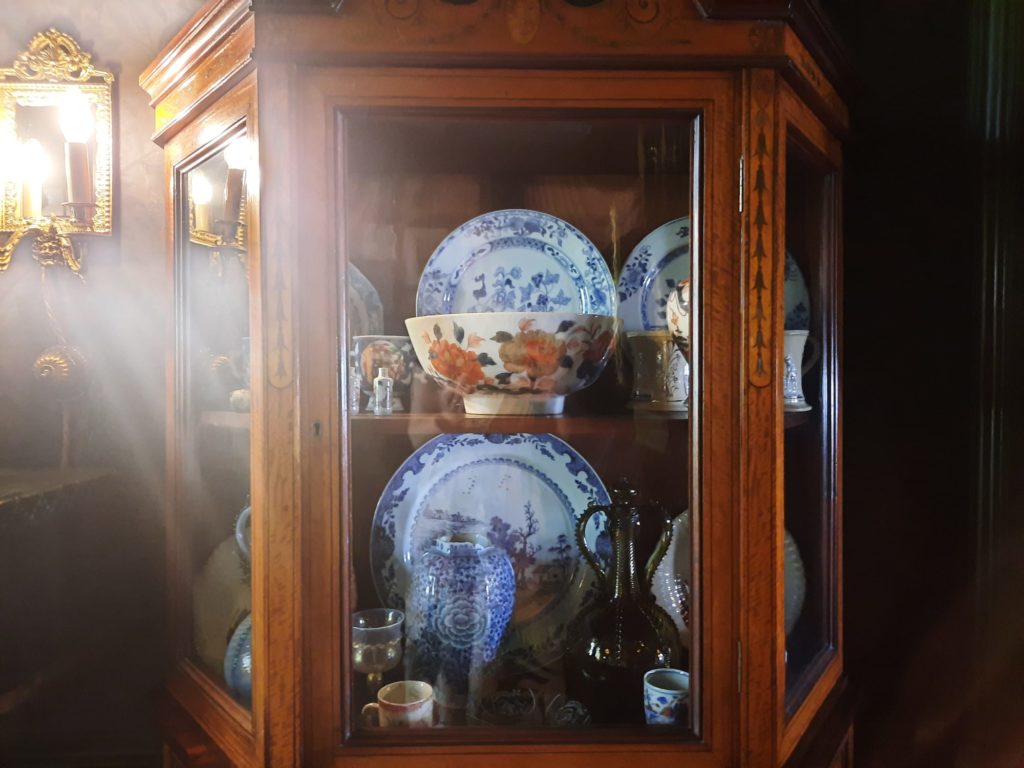
The Holland Park Circle (Almost)
If you recall, when I visited Leighton House last year, I saw an exhibition about the Holland Park Circle. This name refers to a group of artists who build homes and studios in this fashionable area in the late 19th century. Building a studio-home was a good way to establish an artistic reputation as you could host events, cultivate a social network, and show your good taste. But what if you couldn’t afford to design and build a home from scratch?
Today we see one answer to this conundrum, in the form of Sambourne House. Like Leighton House it is in the care of the Royal Borough of Kensington & Chelsea. Like Leighton, the Sambourne family wished to live in a fashionable area with artistic connections, and the benefits that came with it. But the Sambournes’ house was not quite of the scale and status of Leighton’s house: it is part of a very respectable, middle class, Victorian terrace.
This fact did not stop the Sambournes aspiring to good taste, and aiming as high up the social ladder as possible. Mr. and Mrs. Sambourne furnished their home in Aesthetic style. Morris & Co. wallpaper, Japanese objets, and some hand-crafted furniture. It’s a wonderful example of how people really lived with this style: compared to the contemporary room at the Museum of the Home, Sambourne House is absolutely packed to the gunnels. But to properly tell the story, I’m going to have to take you back a bit to find out just who Mr. Sambourne was, and how this house came to be preserved for posterity.
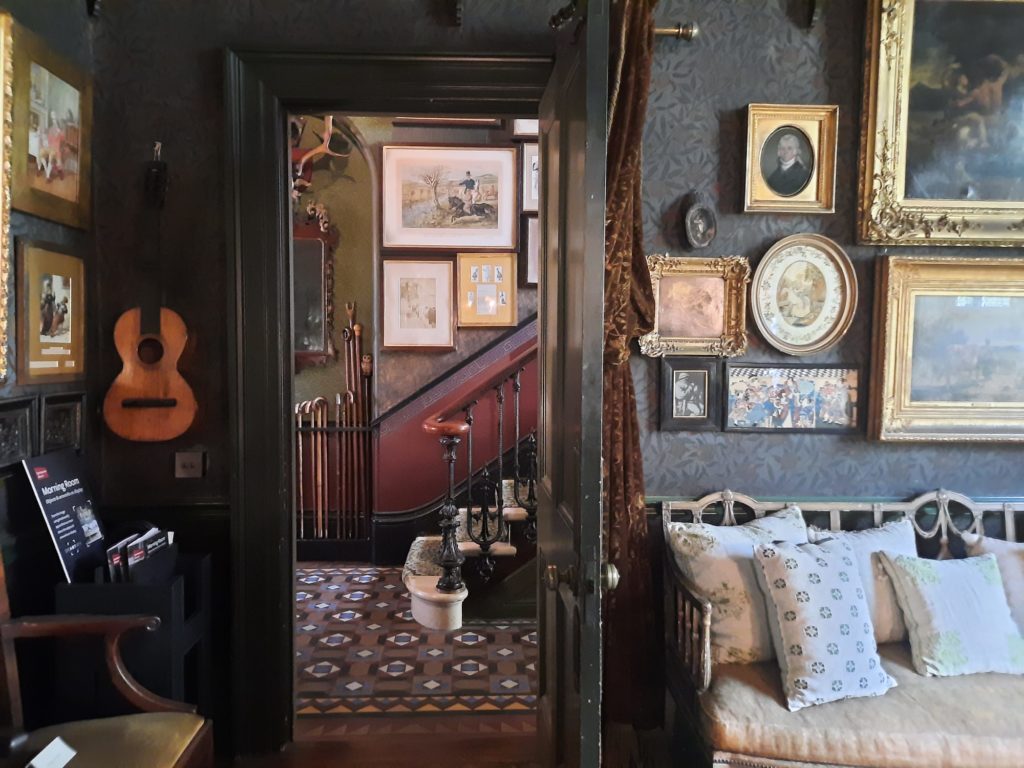
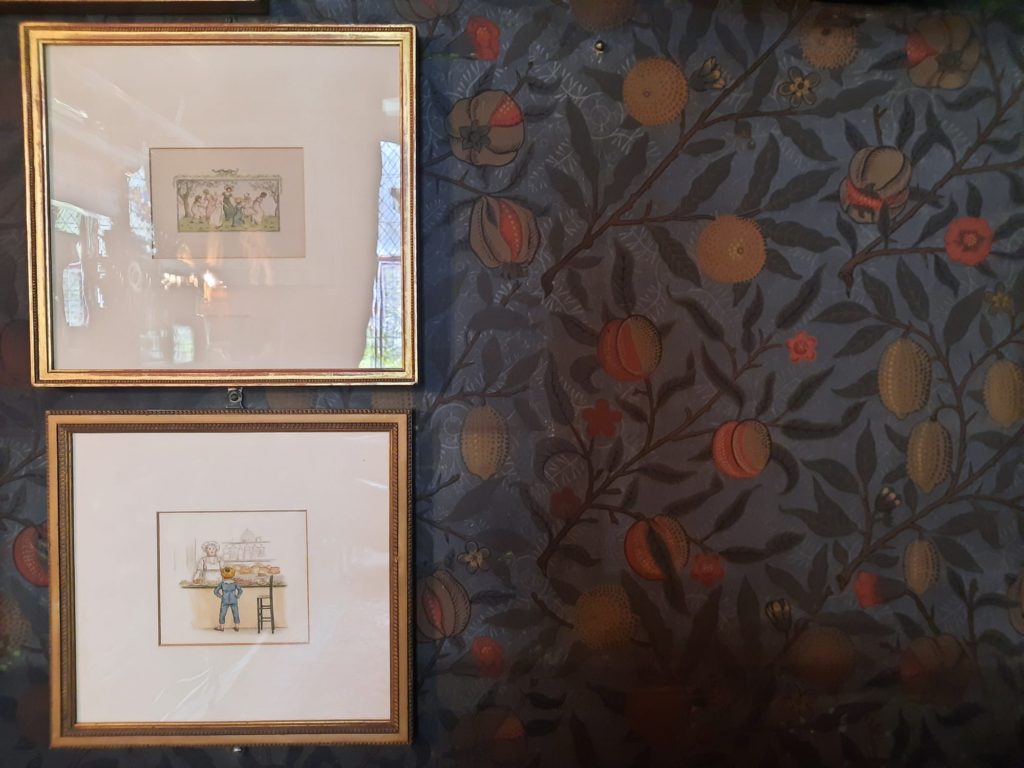
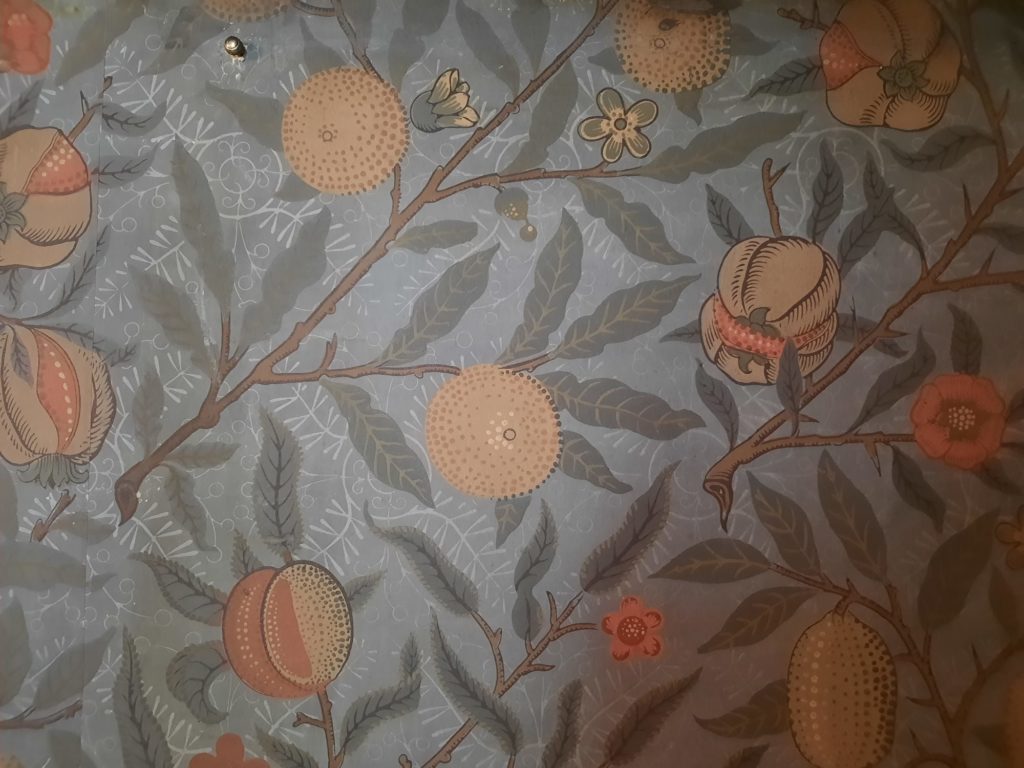
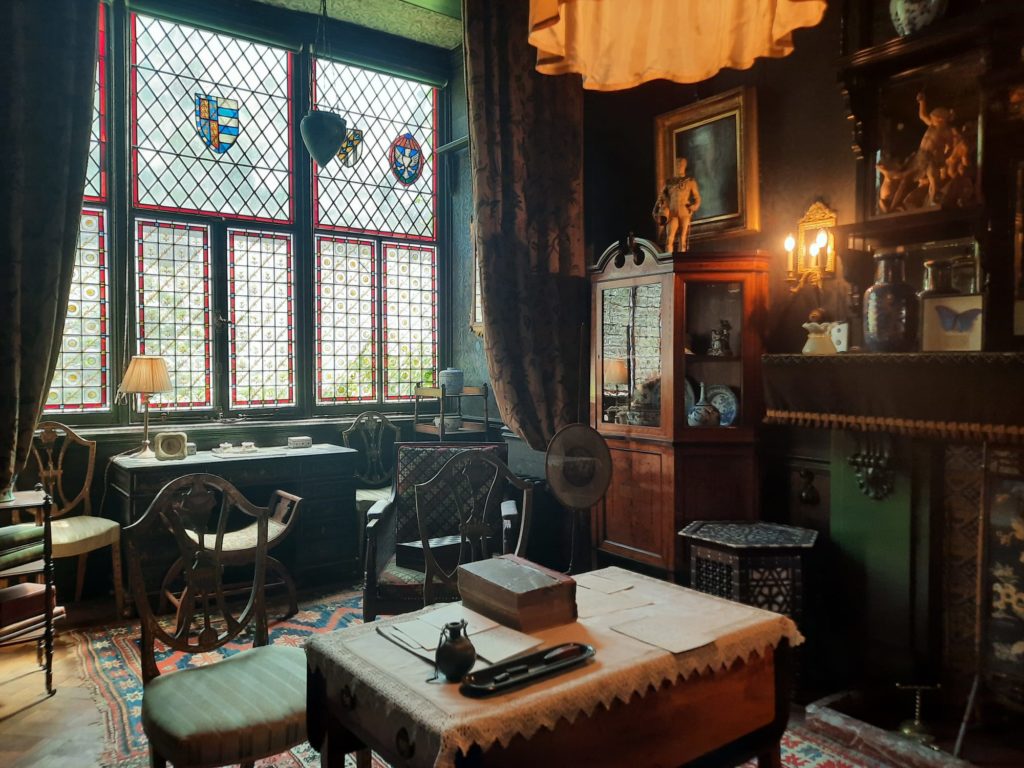
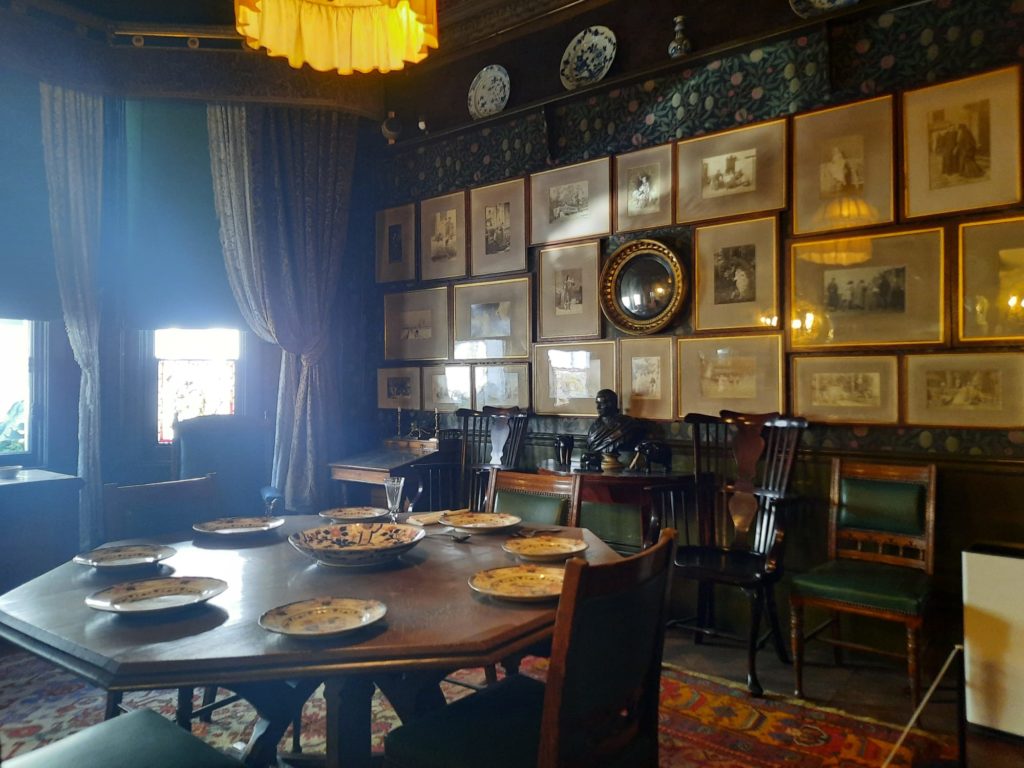
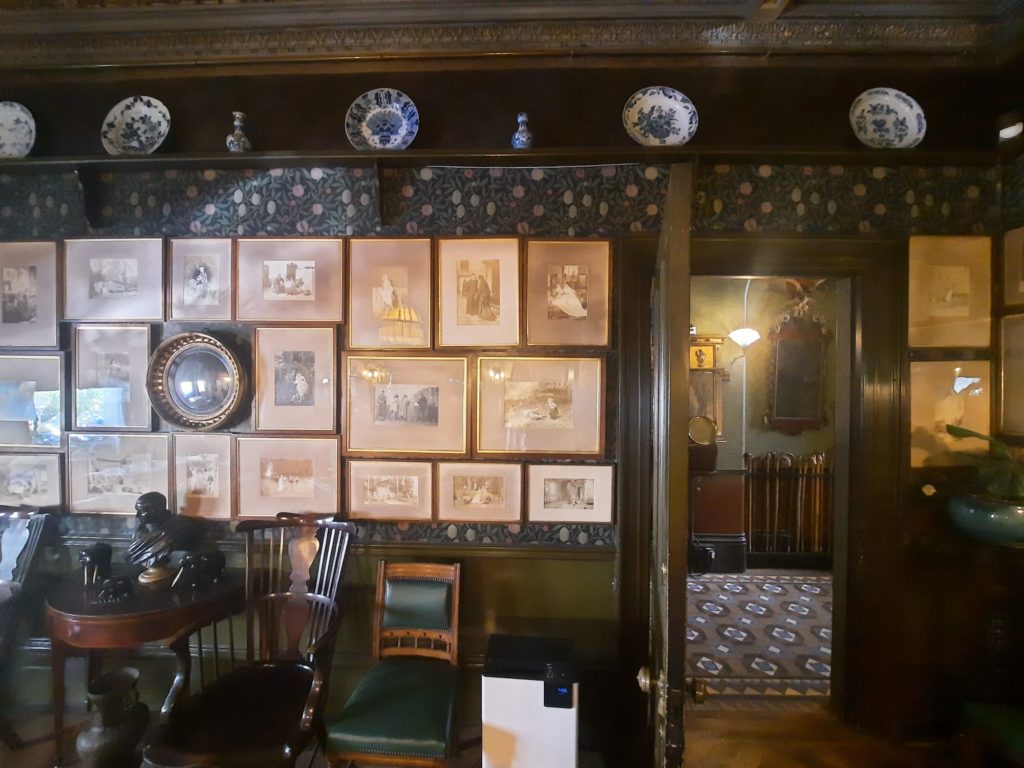
Introducing Mr. and Mrs. Linley Sambourne
Edward Linley Sambourne (known as Linley) was born in London in 1844. He was his parents’ only surviving child. He spent a few months at the South Kensington School of Art aged 16, before joining marine engineers John Penn and Sons as an apprentice. In his spare time he drew caricatures and studied art.
Through a series of connections one of Sambourne’s drawings reached Punch editor Mark Lemon. Lemon encouraged young Sambourne to continue honing his skills, and a first publication of a drawing by Sambourne in the 27 April 1867 issue of Punch was the start of a solid career. From small beginnings, Sambourne’s contributions to Punch became more substantial over the years. He also created illustrations for books, advertisements, and other purposes. He saw the potential of photography to help him with the quick turnarounds required for a topical publication. Sambourne invested in photographic equipment and built up a large library of reference images featuring friends, family, models, and himself.
On the personal front, Sambourne married Mary Ann (Marion) Herapath in 1874. They moved into what is today Sambourne House soon after their marriage. Linley and Marion had two children, Maud (b. 1875) and Mawdley, also known as Roy (b. 1878). Roy never married, and inherited the house after his parents’ deaths (Linley died in 1910, Marion in 1914). He lived there until his own death in 1946, hardly changing anything during that time. Maud then inherited, and in turn passed the house to her daughter Anne, later Countess of Rosse.
To finish on the family front, Anne’s son from her first marriage was Antony Armstrong-Jones, 1st Earl of Snowdon, who married Princess Margaret in 1960. Another family title, Viscount Linley, hearkens back to where we started this story. Linley and Marion, who moved to Holland Park at least partly to further their family’s social standing through connection with all those owners of the Holland Park Circle home-studios, would undoubtedly be thrilled.
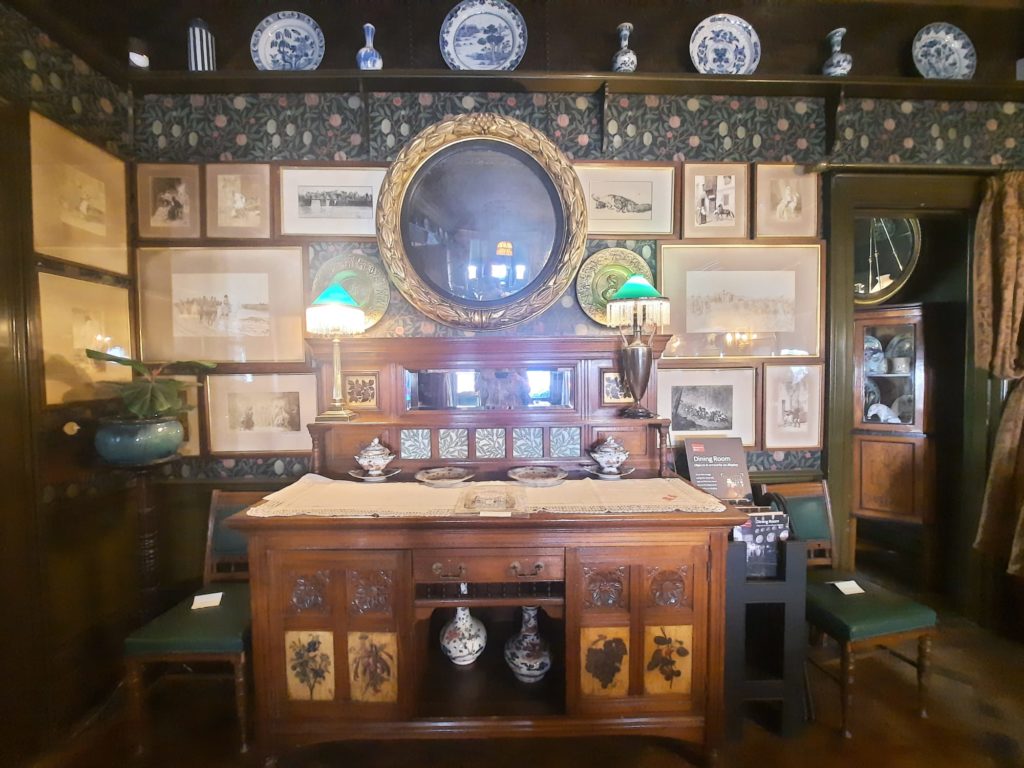
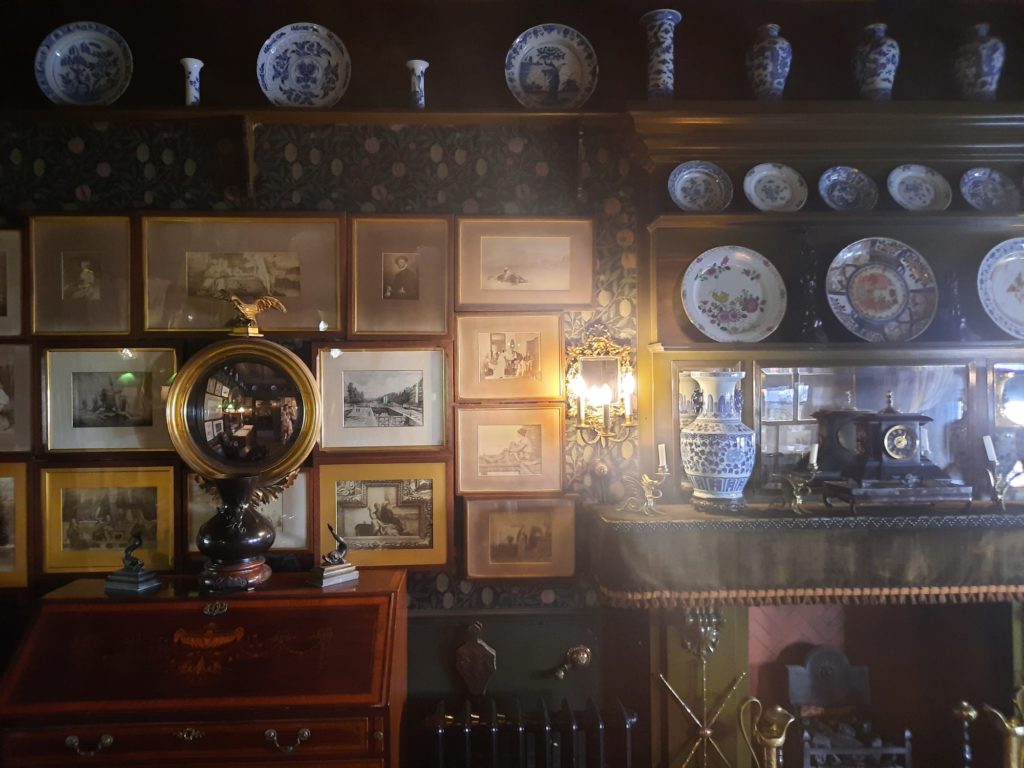
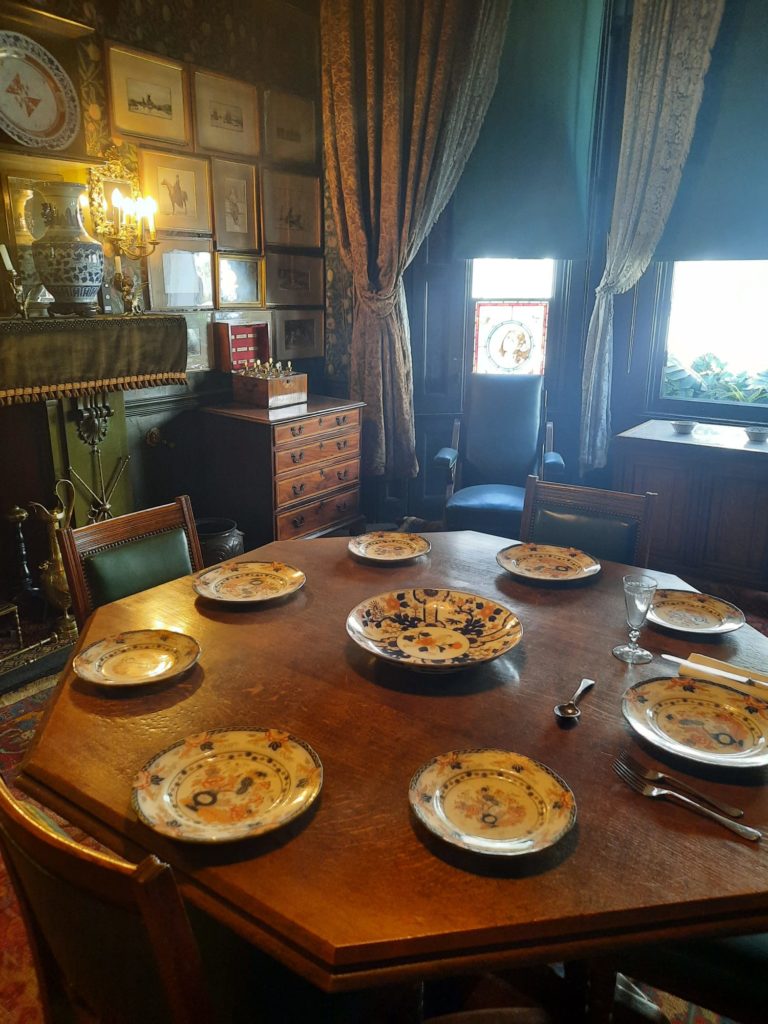
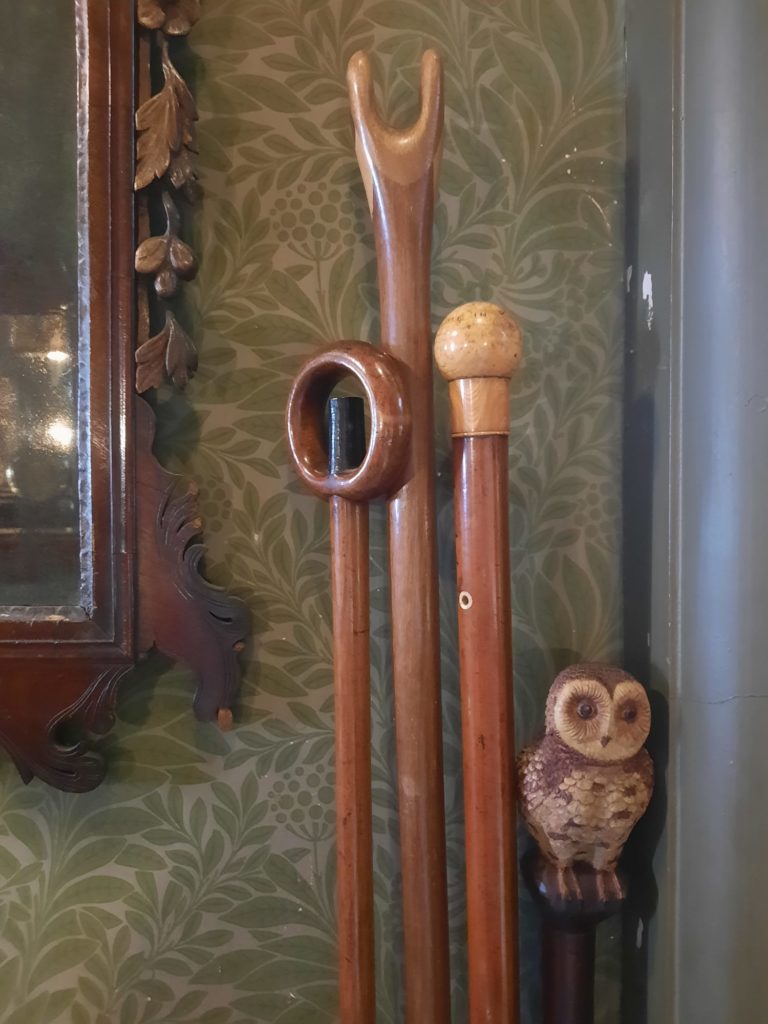
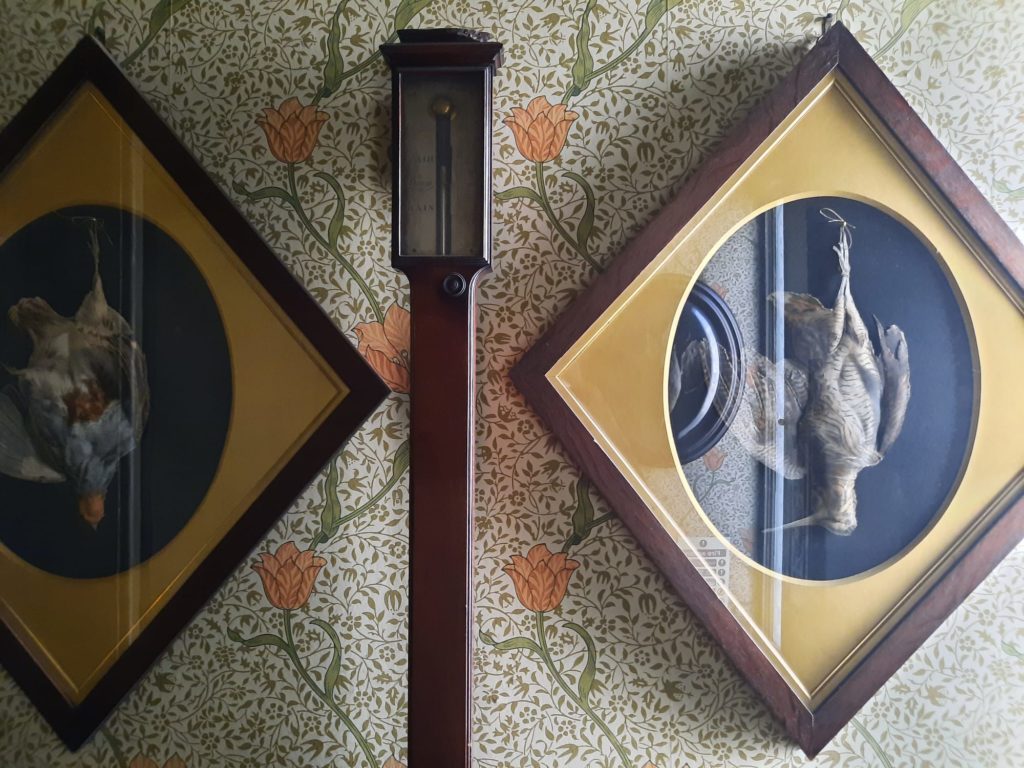
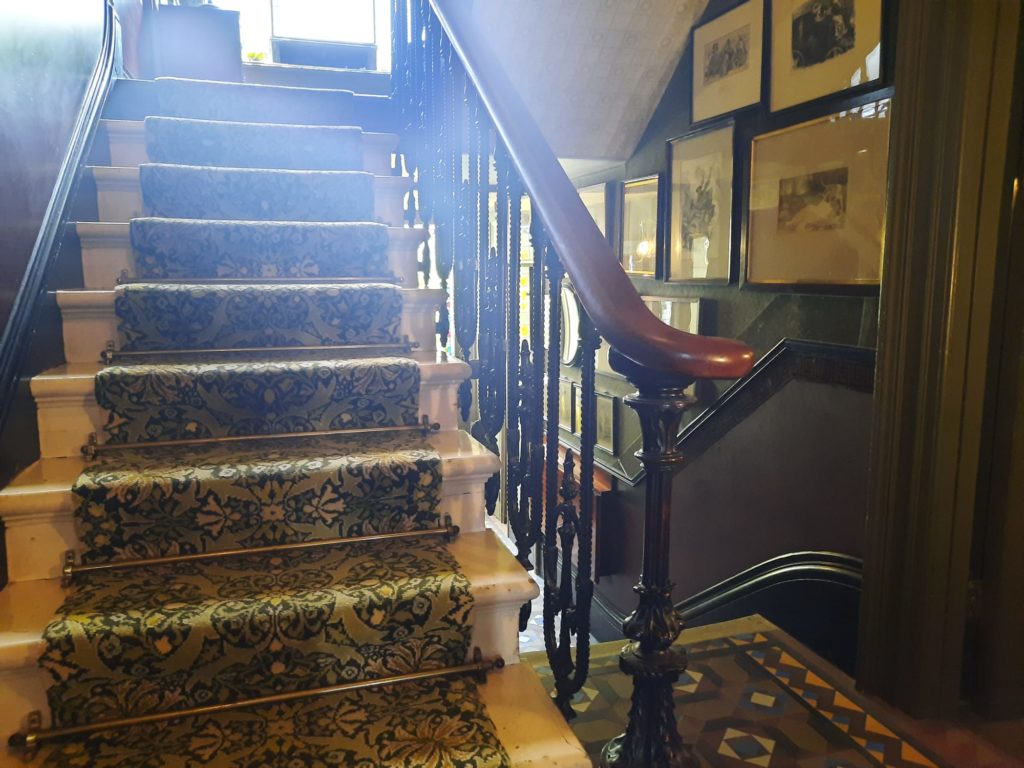
An Unusual Survivor
Any Salterton Arts Review readers from my home city of Dunedin, New Zealand, may think this story rings a bell or two. It’s a similar tale to Olveston, an Edwardian house which survived with furnishings intact in large part thanks to a lack of heirs. Unmarried children, it seems, are great at preserving their parents’ home and everything in it.
Such is definitely the case with Sambourne House. By the time Roy died, the house’s interior was terribly unfashionable. But Maud and Anne were not in need of it as a primary home (already moving up in the world, you see), and so it stuck around. Anne was rather fond of it, in fact. So much so that she became interested in all things Victorian, and founded the Victorian Society from Sambourne House in 1958. If you survive long enough, you go from being unfashionable to being a historic rarity, I guess.
In 1980 Lady Rosse negotiated the sale of 18 Stafford Terrace (Sambourne House’s address) to the Greater London Council, with a lease to the Victorian Society. The Victorian Society opened the house as a museum. When the Greater London Council was dissolved in 1986, ownership transferred to the Royal Borough of Kensington & Chelsea (who also own Leighton House). RBKC chose not to renew the lease to the Victorian Society as of 2000, and now run the museum directly.
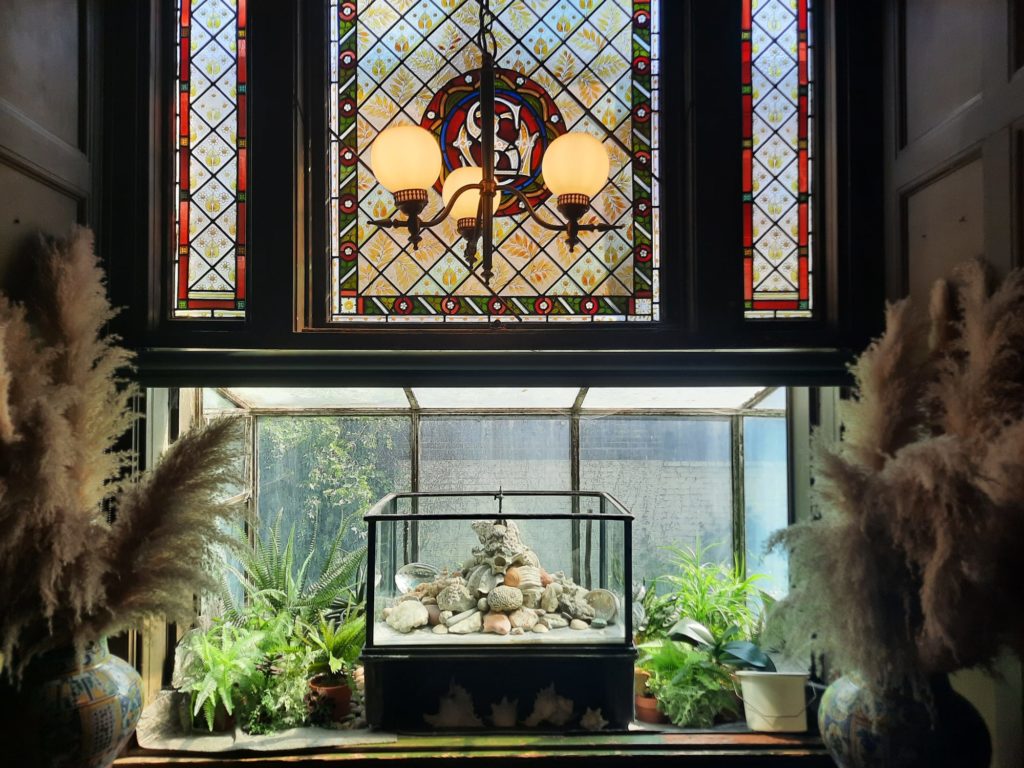
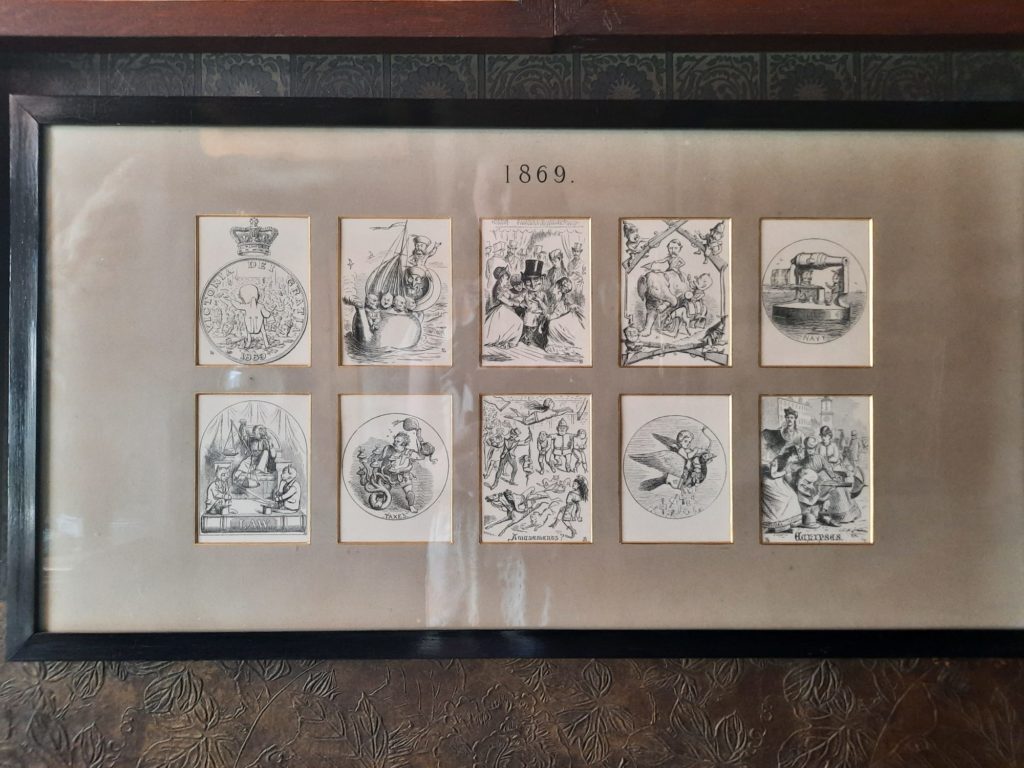
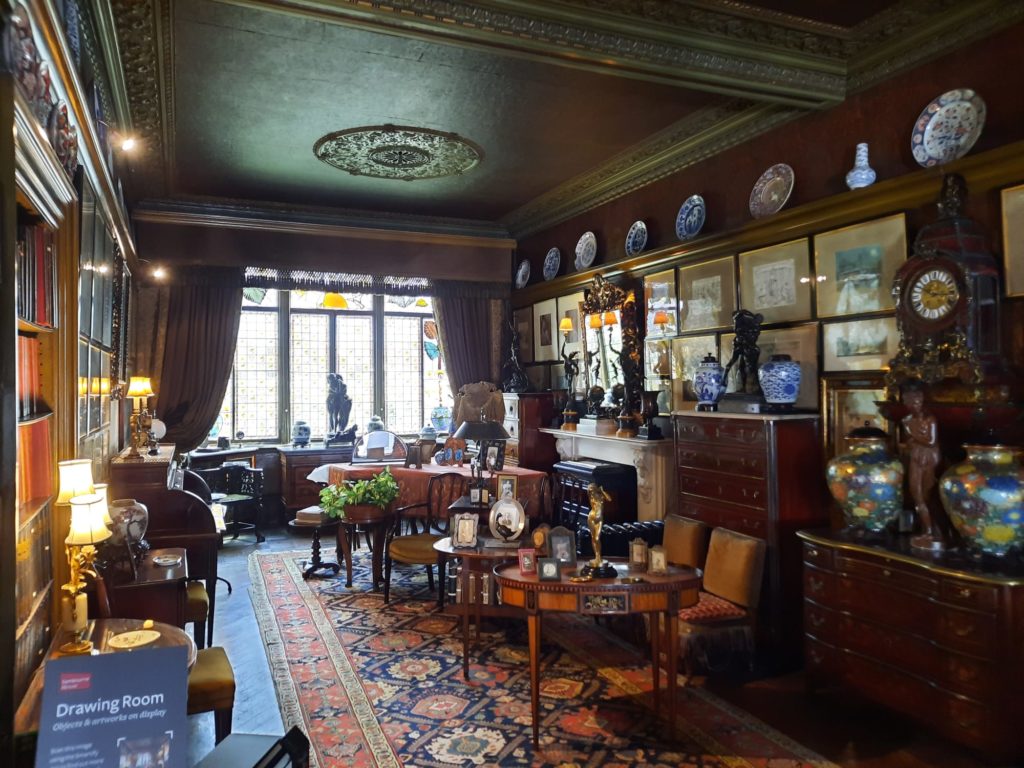
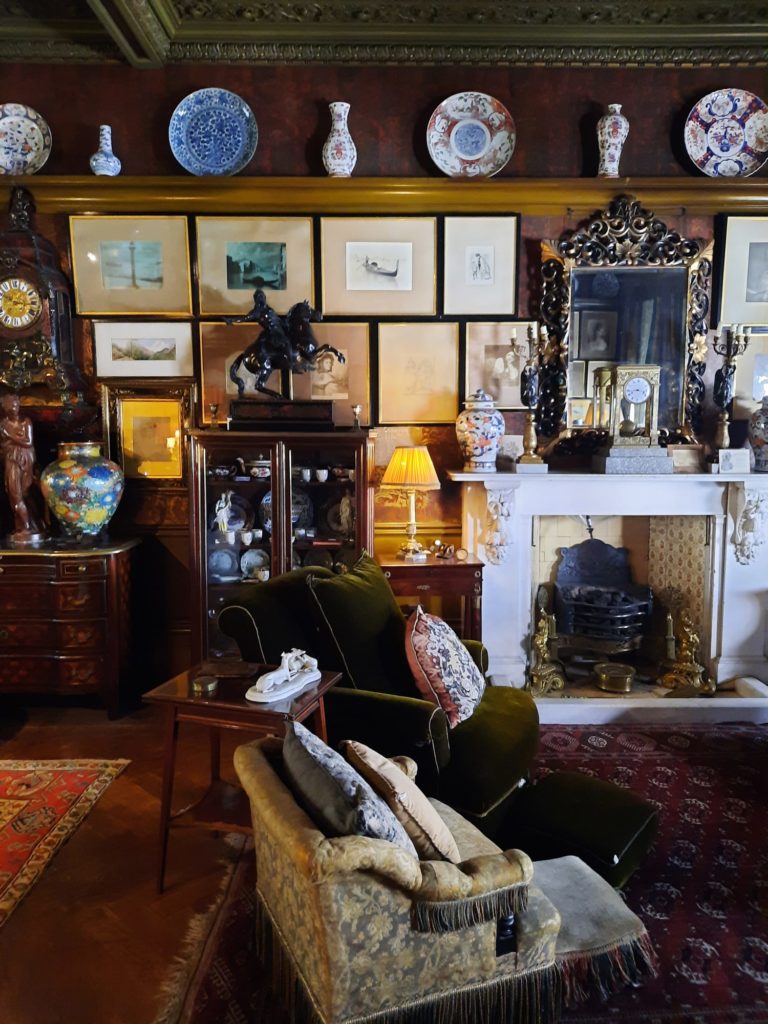
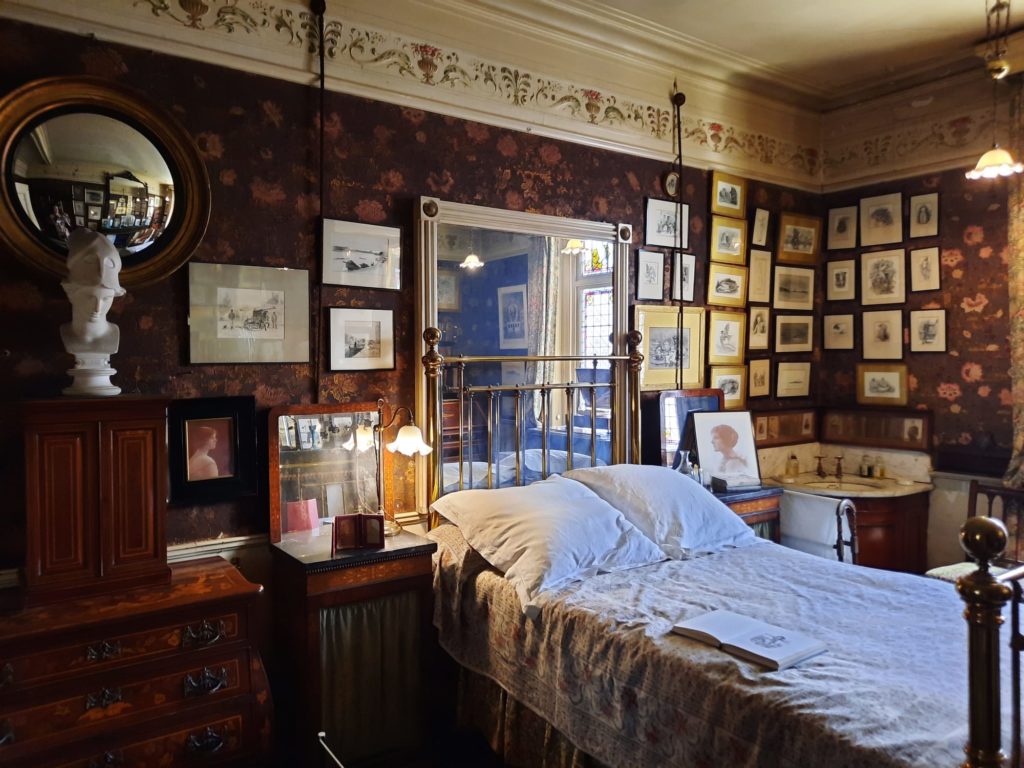
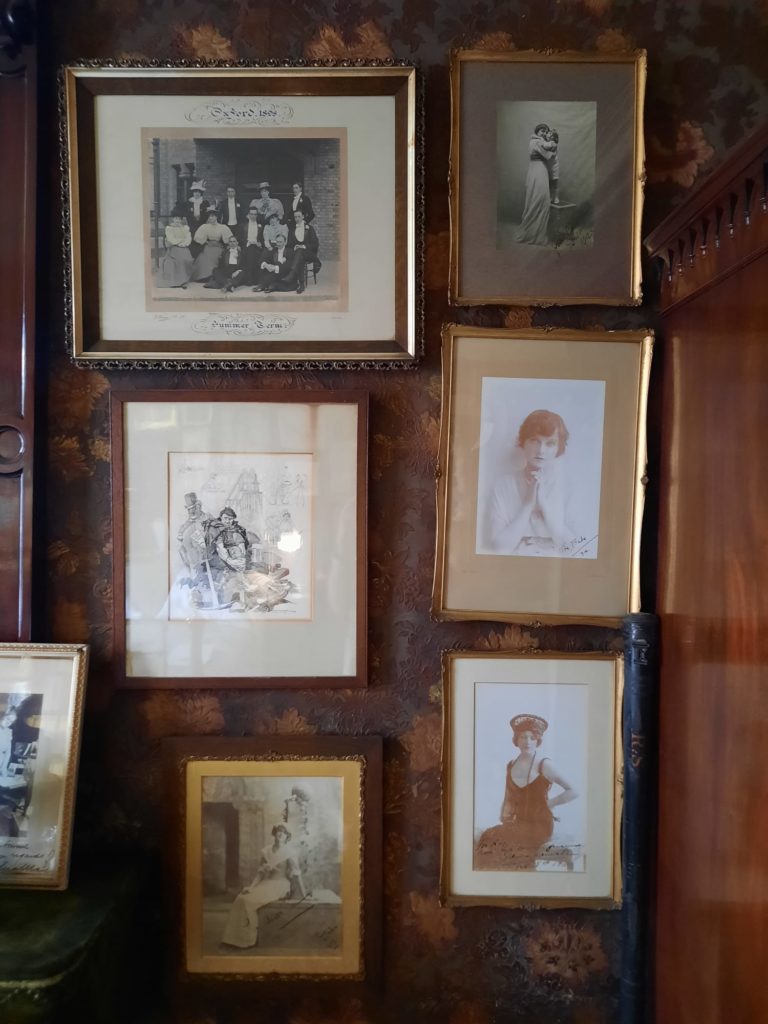
The House Beautiful
In 1875, when the Sambournes moved into Stafford Terrace, they redecorated their new home in the latest fashion. This was Aestheticism. As the name suggests, Aestheticism is about aesthetics. About things that are beautiful, rather than just functional. You may have heard the maxim “art for art’s sake”. There’s some overlap in terms of period and purpose with the Arts and Crafts movement, but Aestheticism tends to be more sinuous and elegant. Both were a reaction to the Victorian period’s mass production and connection of literature and art with ethical values.
There are a few markers of the Aesthetic movement when it comes to decorative arts and interior design. These include furniture in dark or ebonised wood with gilt decoration, decorative elements drawn from the natural world, blue and white porcelain, and Asian influence. Looking at Sambourne House, we can see many of these elements. Let’s start with the walls. These are, broadly speaking, a mix of Morris & Co. type wallpapers (not all original), and Japanese designs. One thing to note is that some of these papers have oxidised or otherwise darkened considerably over the years. This contributes to a perhaps unfair impression of the house being stereotypically dour and stuffy.
It certainly is busy, though. This is not the type of high Aestheticism seen in Whistler’s Peacock Room. This is middle class Aestheticism, where the latest fashions combined with a Victorian proclivity for abundance and saturation. Every surface is covered. Every wall, too. It must be a nightmare to dust. But in some of the choices, you can see the Sambournes’ social aspirations. Fashionable homes, for instance, would have a conservatory. There wasn’t space for one at 18 Stafford Terrace, but instead Sambourne had a couple of little window extensions put in to hold fern cases or other features.
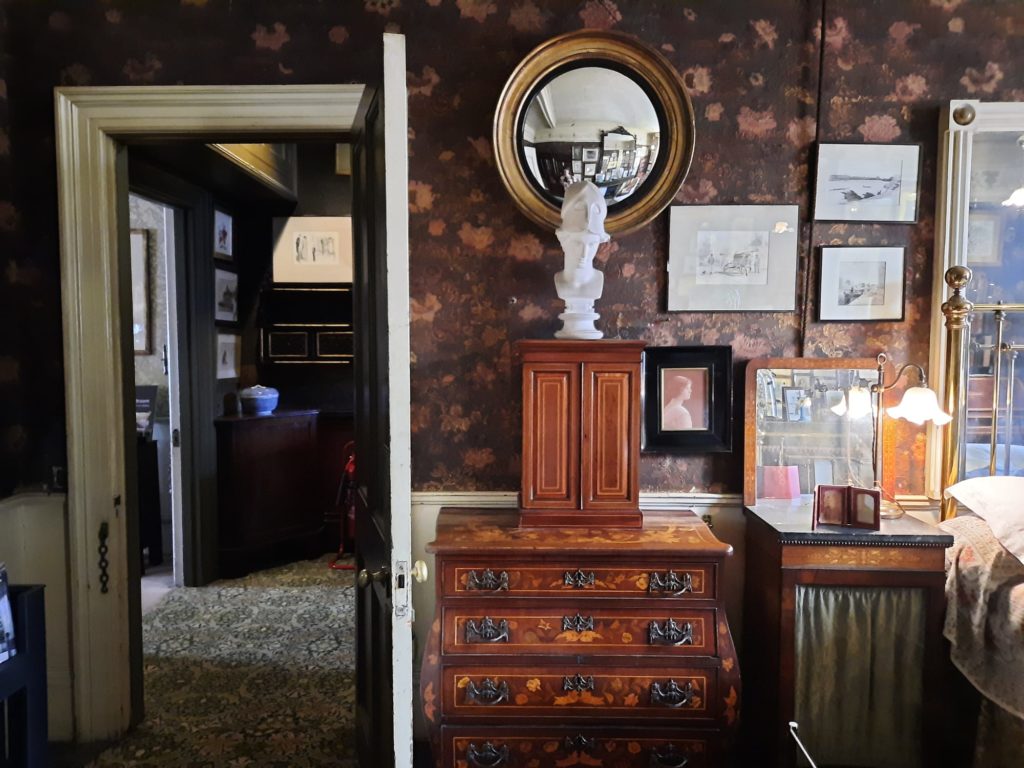
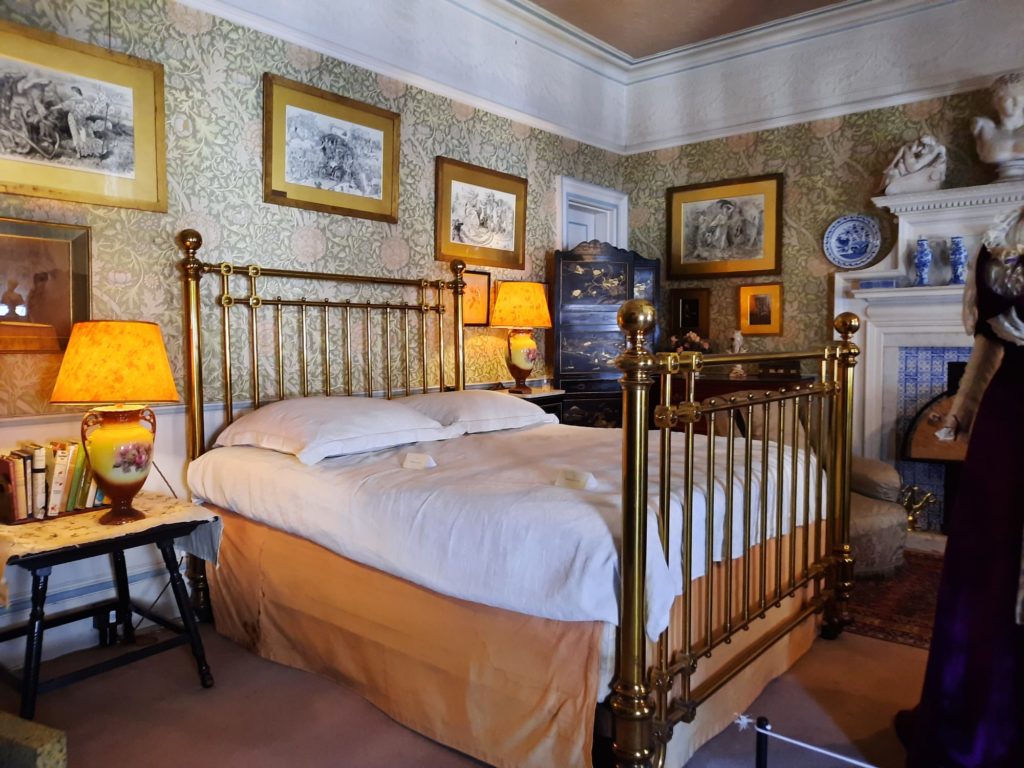
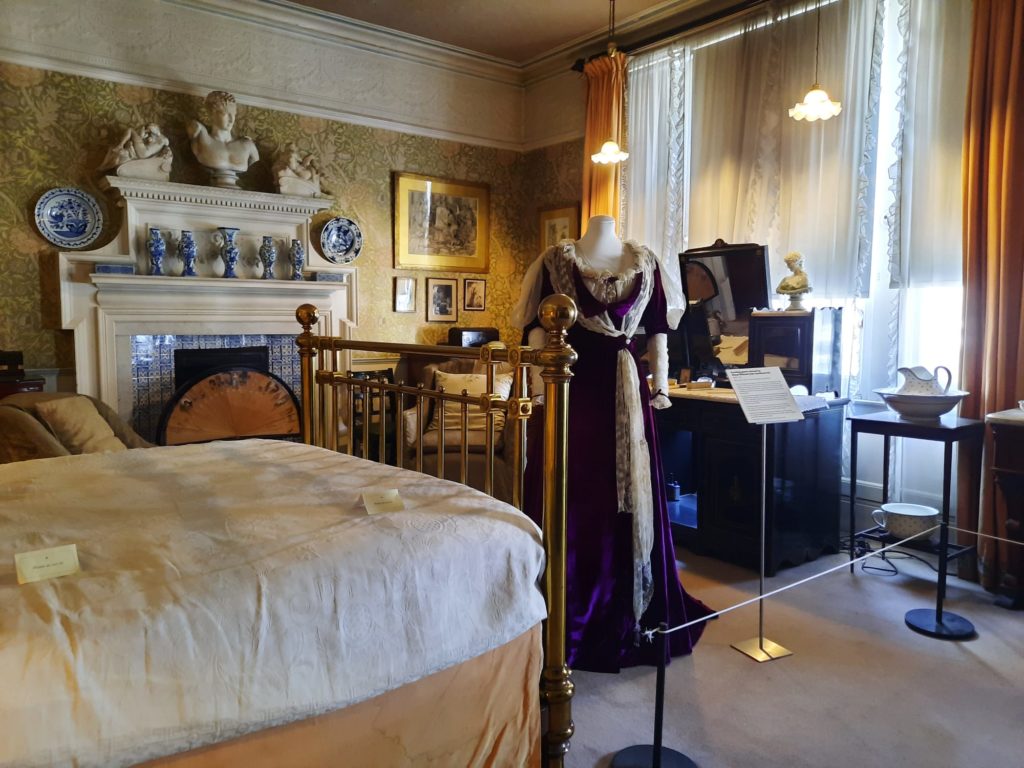
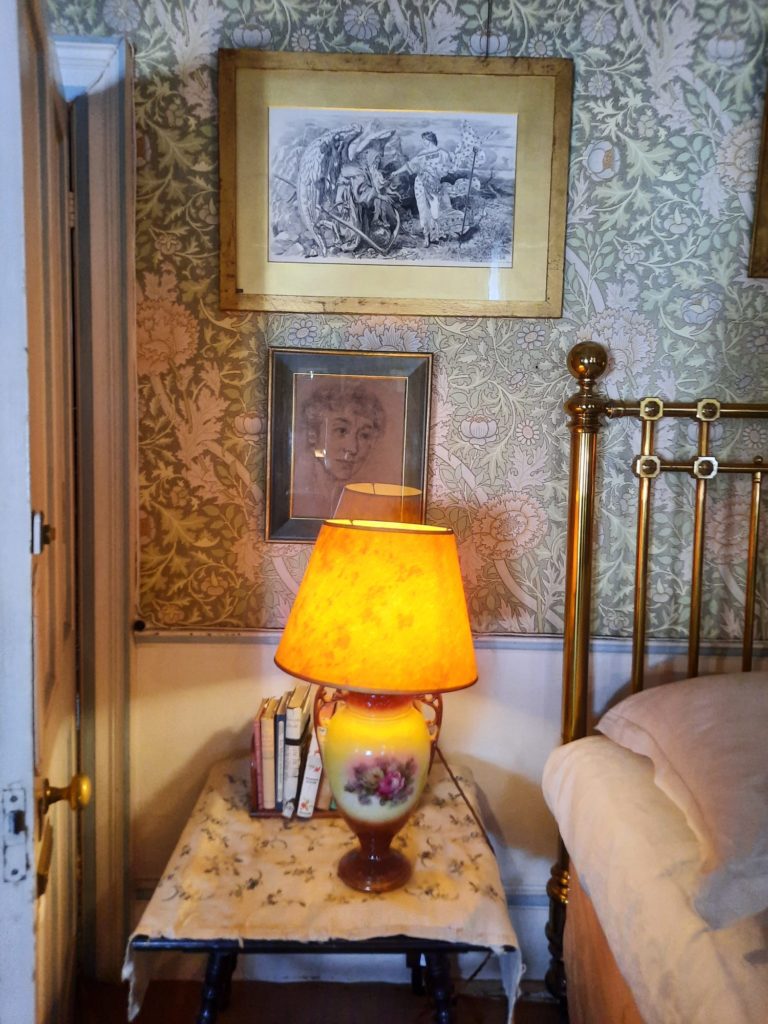
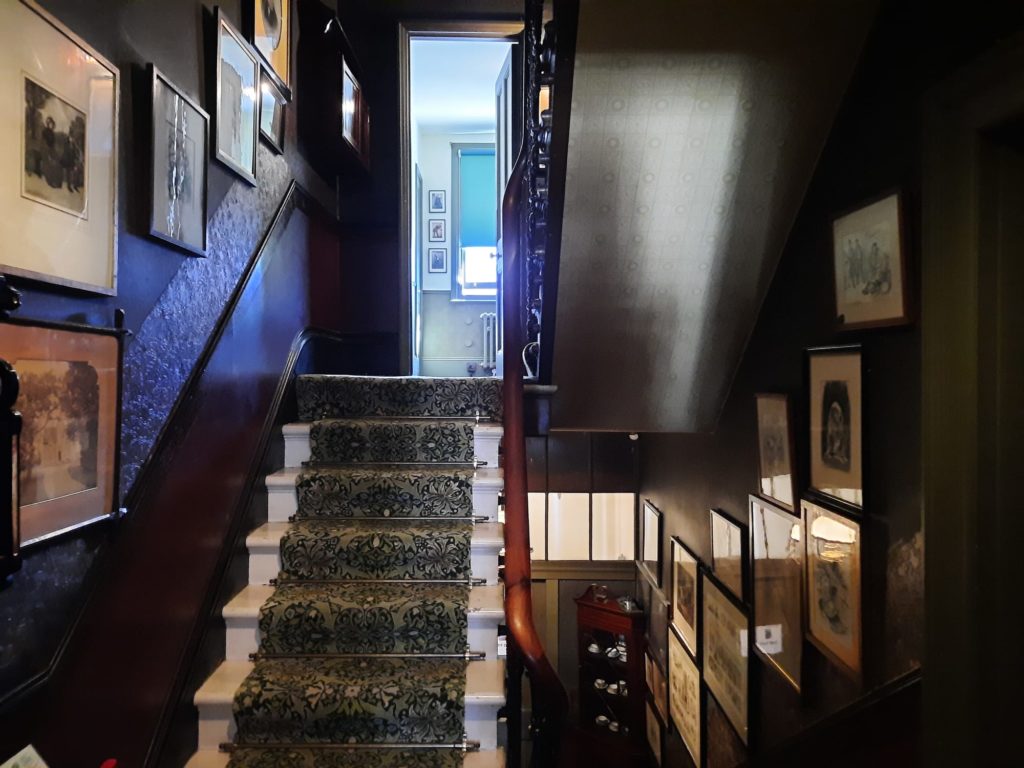
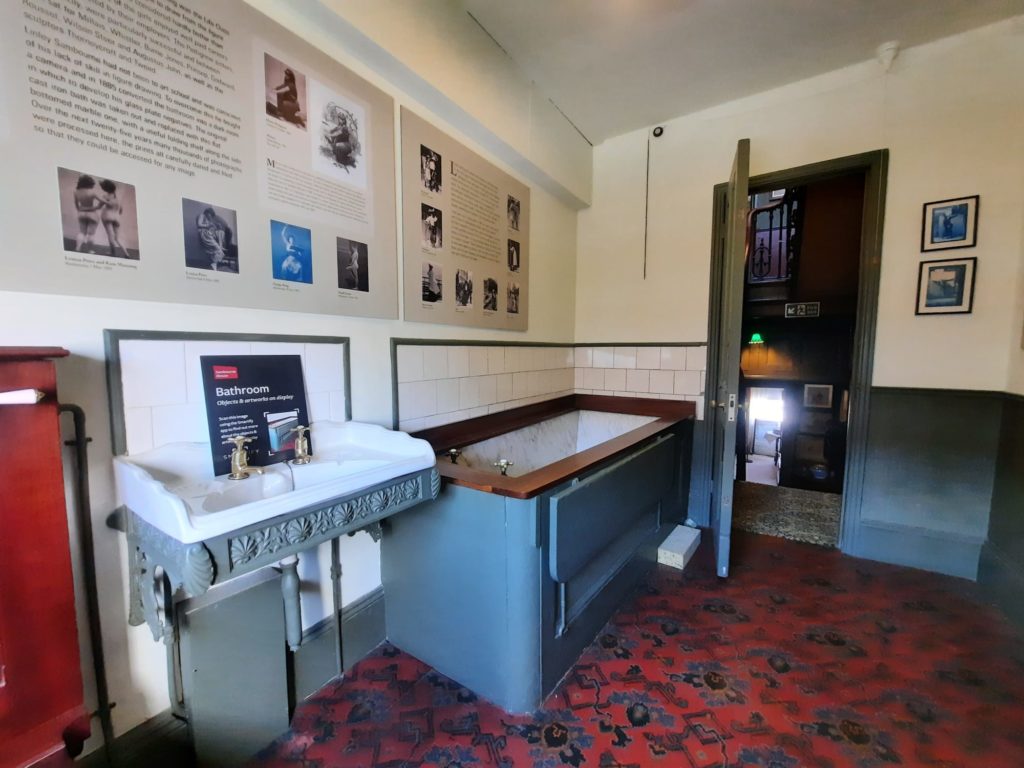
At Home with the Sambournes
And that, I think, is what is so nice about visiting Sambourne House. It’s a rare chance to see, not what the ideal Aesthetic home was, but what a real one was. How people lived with this style and made it their own. What a relatively fashionable and comfortable couple collected and kept in their home.
It’s also nice to see how London’s endless Victorian terraces originally functioned. Some still do, I guess, but many houses have been split into flats or otherwise remodelled, and few have household staffs these days. But despite being relatively modest in means (at least compared to most of the Holland Park Circle), the Sambournes did have help. The lower ground level you enter through today as a visitor was once the servants’ entrance. Down here was the kitchen, storage, pantry, and so on. You have to use your imagination now as the functional things are down here: ticket sales, shop, and an introductory video (worth watching).
Once you get upstairs, it’s all 19th century. Even the bits that had to be restored back to original appearance. The house today reflects its appearance towards the end of its time as family home. The former nursery upstairs is Sambourne’s studio. Previously he worked in the morning room and then the drawing room. Next door is a servant’s room. The top floor is off limits but presumably was more space for servants and storage. There’s quite a nice flow to the space – compared to modern city living it’s very roomy for a family of four.
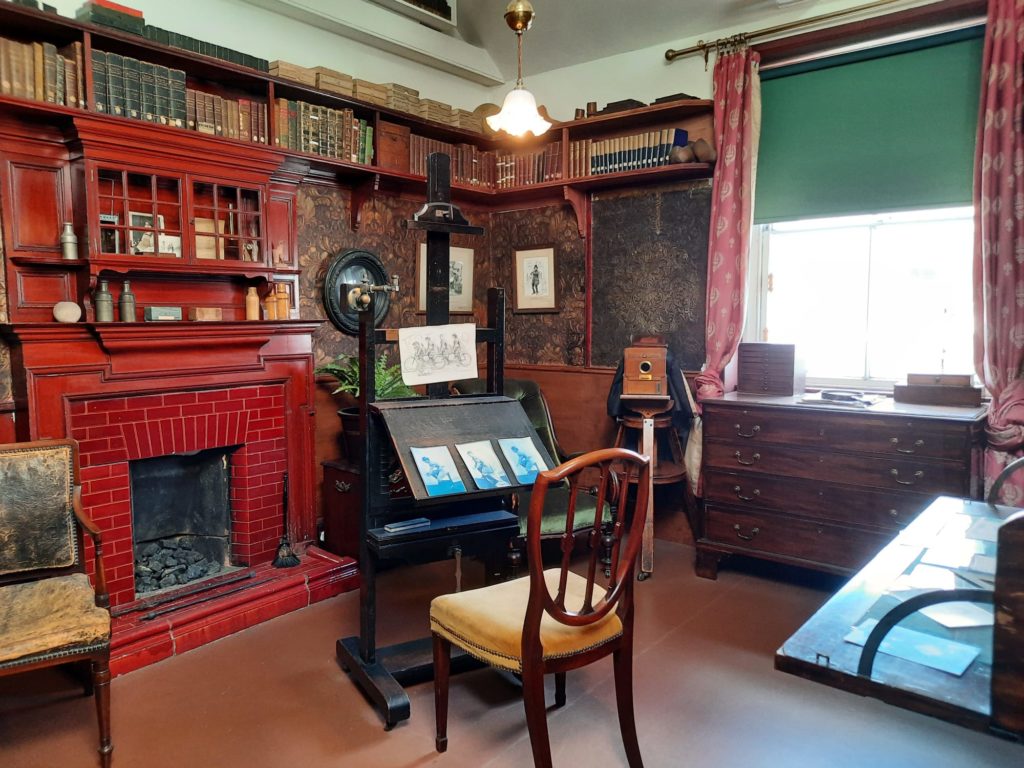
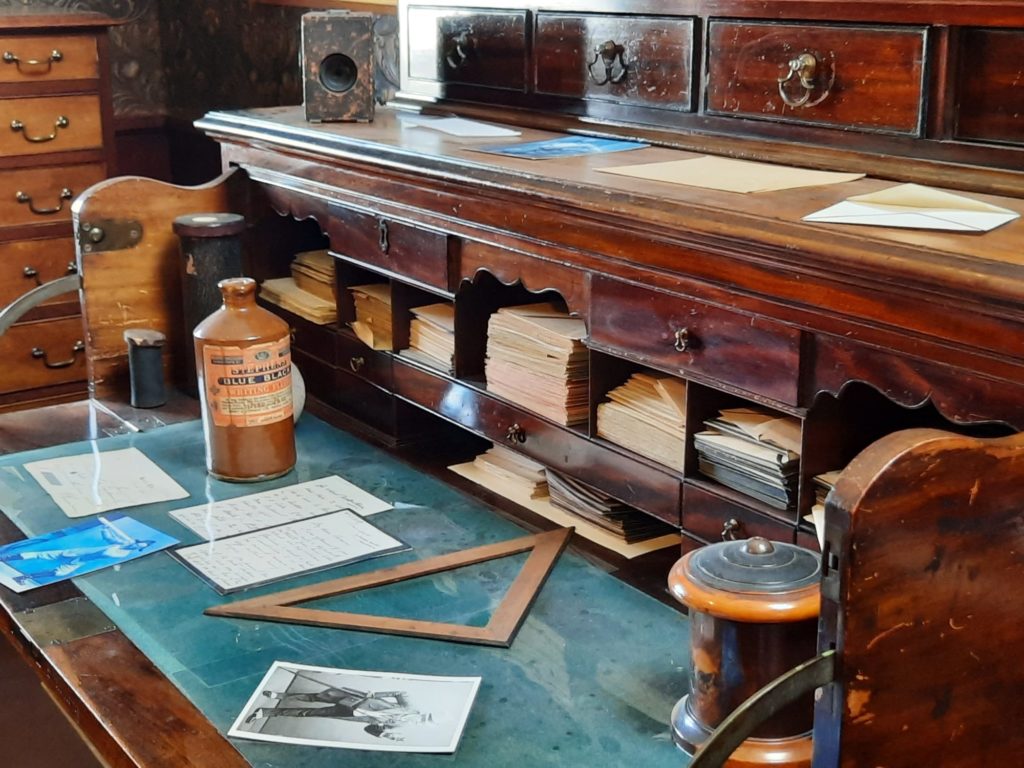
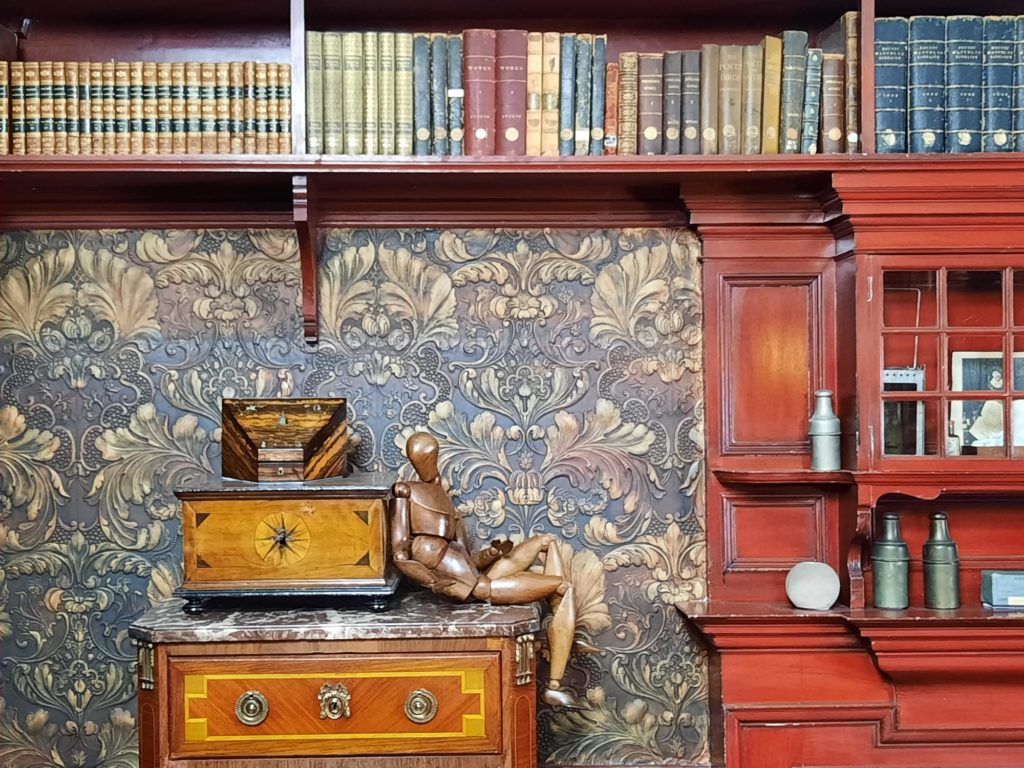
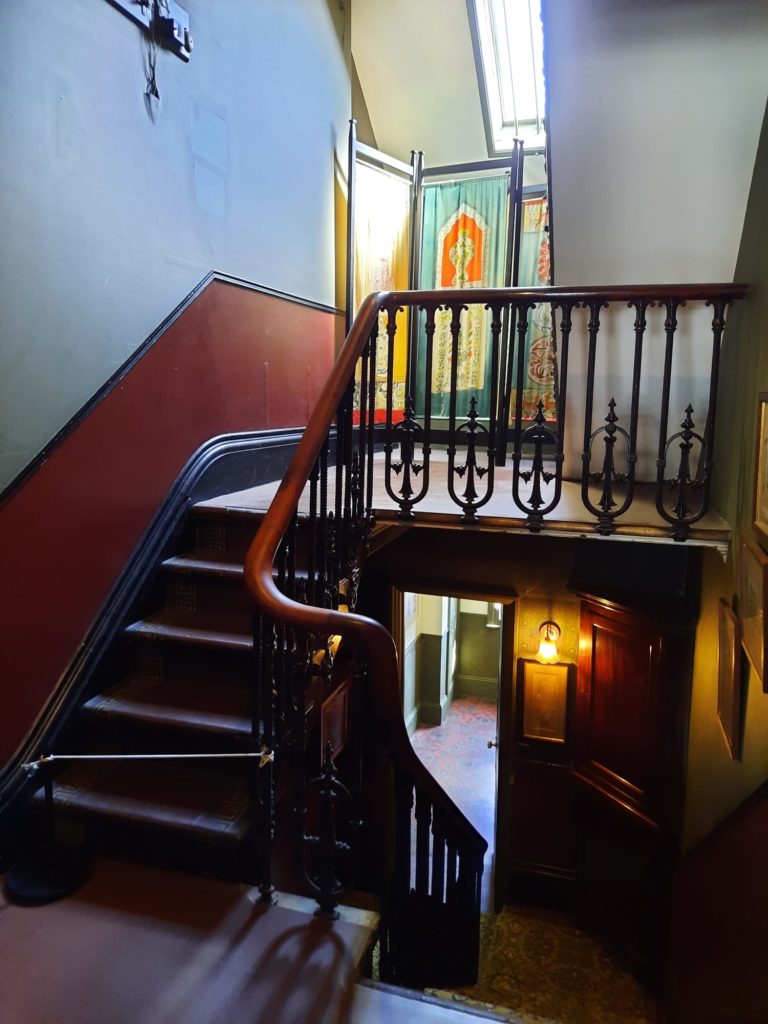
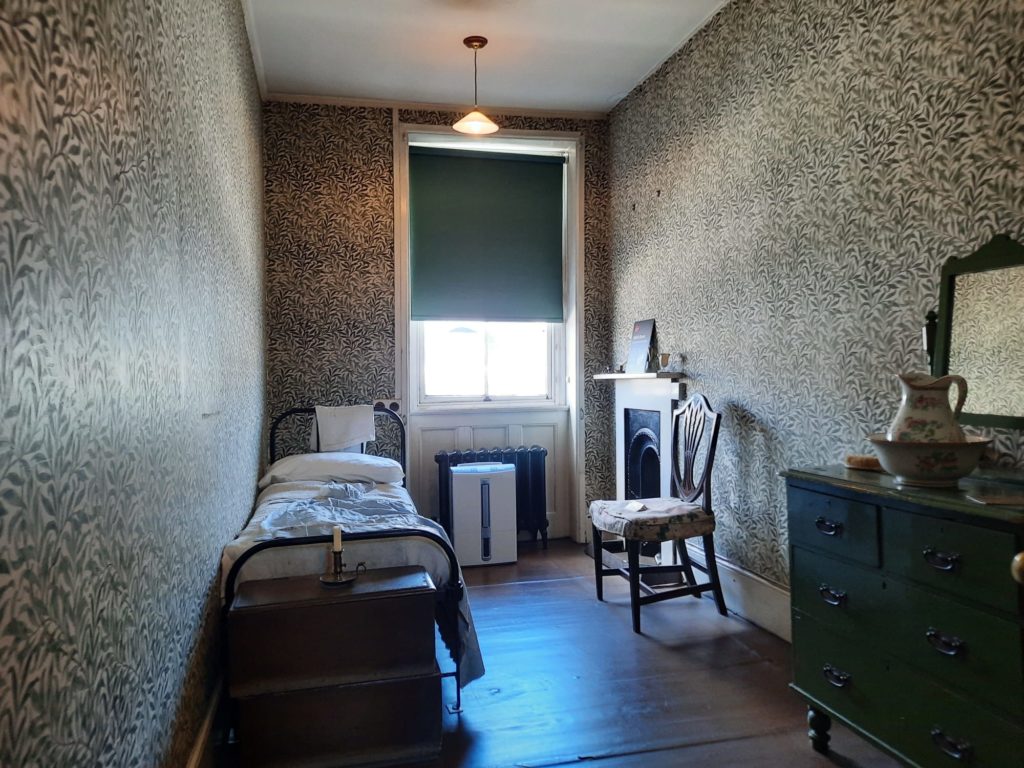
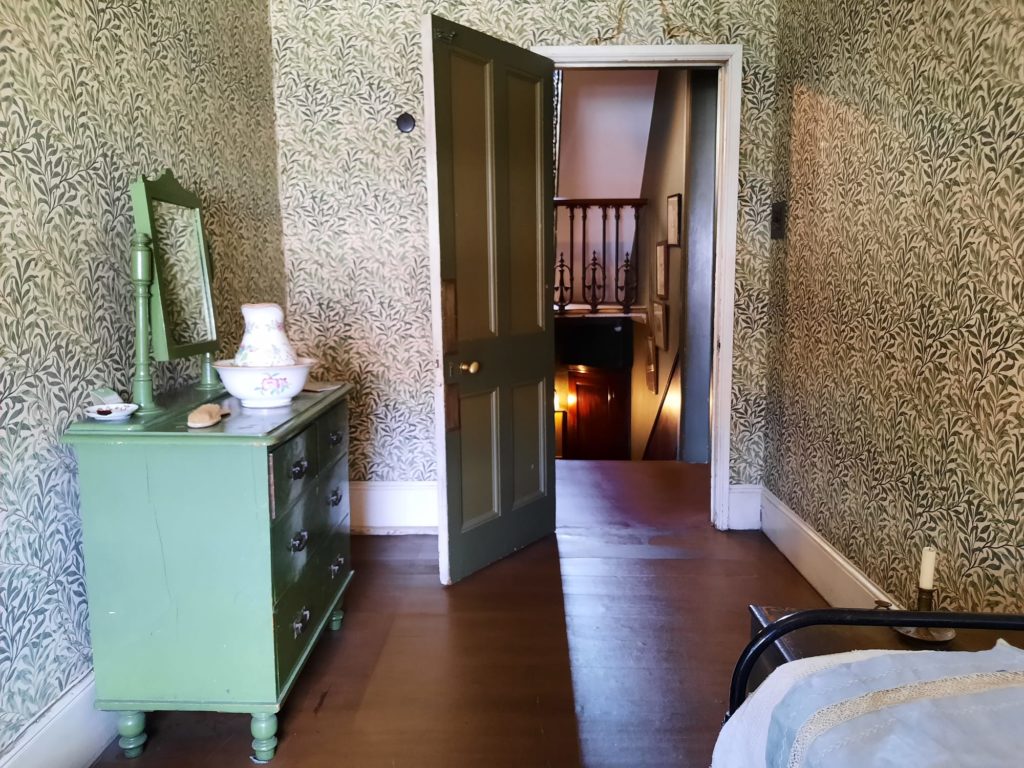
Final Thoughts on Sambourne House
Sambourne House has been on my list to visit for a while. I’m so glad I came. I love this kind of time capsule museum. Everything that ends up in a museum is an accident of history, to some extent. But Linley and Marion would never have dreamed when furnishing their home in the 1870s that people would still be enjoying it today. As a totality of the possessions of a family, it offers real insight into not just that family, but into fashionable London homes of the period, the fringes of the Holland Park Circle, middle class families in general, the Aesthetic movement in practice: the list goes on.
This is also the sort of museum you could visit several times and get something different out of each time. I doubt I properly looked at even 10% of the objects on display. There are also temporary exhibitions to enjoy. I saw one on Marion and Maud’s dresses: again an insight into how middle class women followed fashions without having everything designed and made to order.
Whether you’re a Londoner, a visitor, or want to show off your knowledge of places off the beaten track, Sambourne House is a great pick. It can easily be combined with a trip to Leighton House to see two sides of the Holland Park Circle. Or the Design Museum is not too far away. Whatever your intention in visiting, make sure you have the time to really soak up the atmospheric interiors. The visitor hosts are also knowledgeable and more than happy to chat and answer questions – a wonderful resource I encourage you to make the most of.
Salterton Arts Review’s rating: 3.5/5
Trending
If you see this after your page is loaded completely, leafletJS files are missing.

